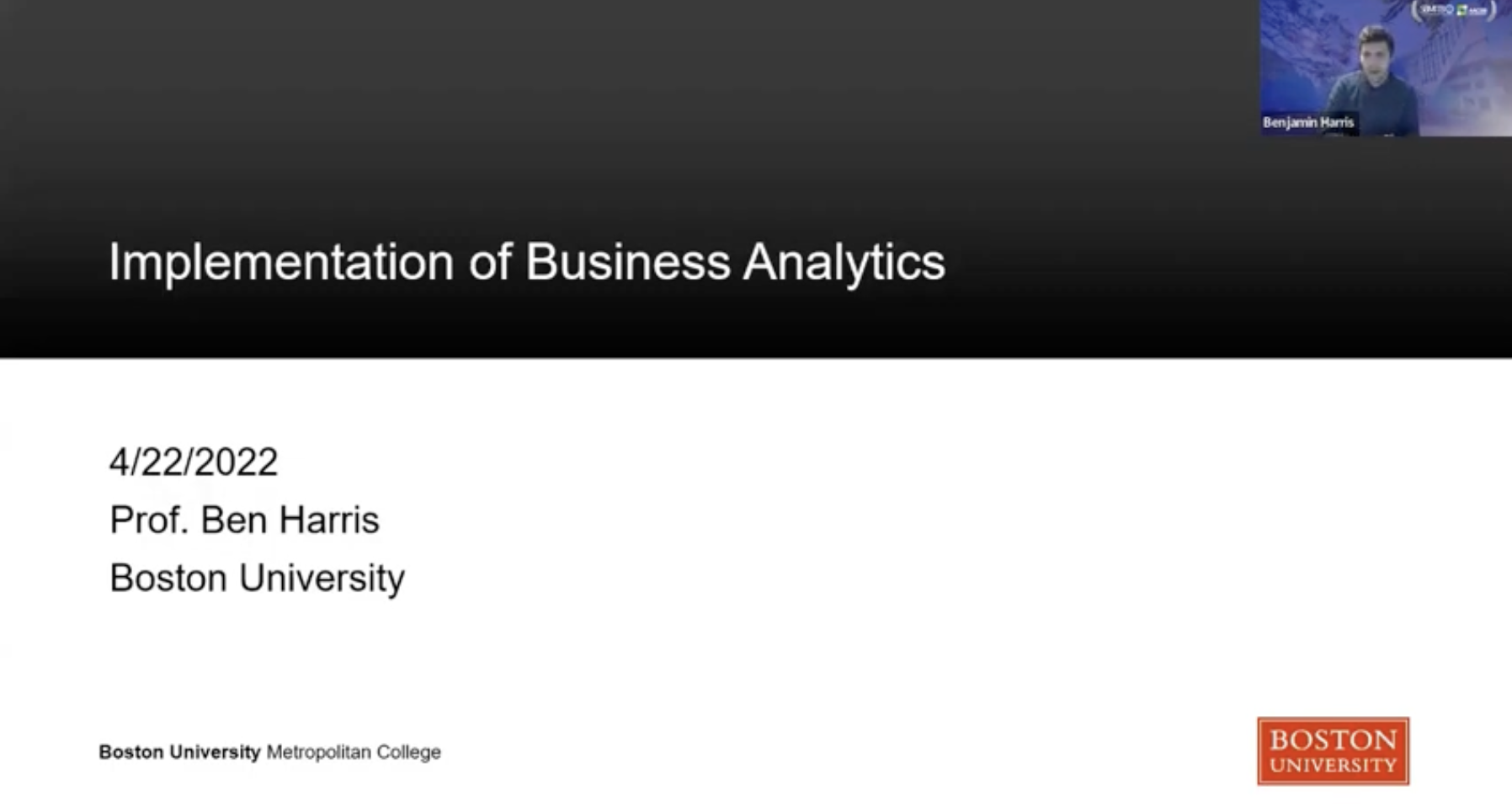In collaboration with Boston University (BU), SBM ITB presented a guest lecturer, Dr. Benjamin P. Harris, Assistant Professor of BU, on Friday (22/4/2022). As an Industrial Engineer with degrees from Northeastern University and Boston University, he first opened his lecture with the history of Business Analytics. With professional experience as an engineer in business development and analytics, Dr. Harris explained three eras of business analytics.


Besides the hard skills, he also presented the soft skills in Business Analytics. In his opinion, several groups of people are involved in the analytics process within a company: investors, practitioners, directors, and customers. He believed that these four are all necessary for a sustainable analytics implementation.
Next, Dr. Harris talked about the importance of data. He argued that if companies do not invest the technology, they will be left behind. With the analyses, firms can measure the impact of analysis implementation. In addition, the quality of decisions increases with optimal data analytics.
Lastly, he described supply chain analytics. The first thing is to examine market data for potential additional suppliers. Then, he also mentioned descriptive analytics to estimate supply chain impact, predictive analytics to estimate the new cost of the product, and prescriptive analytics to define new products with new materials.




